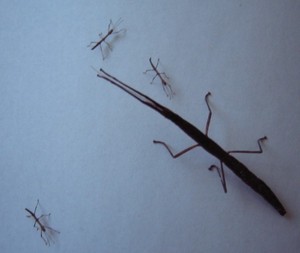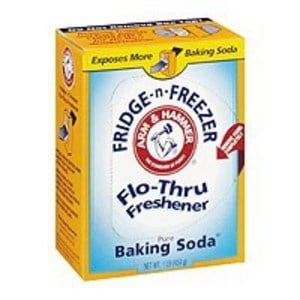About Northern Walking Sticks
Northern Walking Stick Insects or Diapheromera femorata are a species of Phasmids coming from the order of insects called Phasmatodea. The Northern Walking Stick is one of the few non-tropical Phasmids and are native to North America. They grow to about three or four inches long and are vegetarians. Their colors range from green to brown.
Northern Walking Stick Insects as Pets
They are an ideal pet for beginners or children. Their short lifespan of approximately one year, means they are a short commitment. They are cheap to feed and the only cleaning they require is removal of dried leaves (see feeding and care) and the occasional shedding skin. They are a fun and easy pet for the enthusiast and are great for people with animal allergies or who do not have room for a larger pet.
Legalities
At the time of this writing Northern Walking Stick Insects are the only species of Walking Stick Insects that are legal to own in The United States. Canada allows more species of Phasmids to be kept as pets however, Canada does not allow private individuals to keep Giant Indian Walking Stick Insects. The United Kingdom and Other European Union countries allow private individuals to keep a greater variety of Phasmids than either The United States or Canada.
Housing
Your pets habitat may range from the simple to the elaborate. You can have a no cost jar or a well designed vivarium, as described below. Either way, the most important part of any Walking Stick set up is to provide them with Sticks, Twigs, or Branches. These are essential to their molting process. I can not stress this more. Not providing Phasmids with these tools for molting could be considered cruelty. The second most important requirement is a good lid. If you are using a large jar, having small holes in the lid will be enough, but for a larger set up you will want a tightly woven screen. You can purchase these from pet supply shops or make your own, its important the screen is fine, as nymphs (babies) are very tiny and can escape otherwise. They prefer taller enclosures to short long ones.
I prefer keeping Northern Walking Stick Insects in a Tropical Vivarium of 7 to 10 gallons in size. Vivariums are Terrariums that include both plants and animals. The simplest is an aquarium with newspaper on the bottom and a few potted plants inside, a more elaborate vivarium has a dirt floor (kept moist if you want babies), and has fake plants (so they do not eat them) and twigs. You can use any type of Aquarium to make a Vivarium. It’s a good way to recycle that leaky aquarium you have in the basement.
Like most Phasmids Northern Walking Sticks can be kept in mixed species Vivariums with other herbivorous species. Special lighting is not required, sunlight will be enough.
Food and Care of Northern Walking Sticks
Water is just as important for Walking Sticks as it is for most life on Earth. To water your Walking Sticks a simple misting bottle is all that is needed. However, you can set up more elaborate misting systems, Drip systems, or a fogger system to meet the watering needs of your Walking Sticks and the plants in the environment that you create for them. Otherwise you can manually add water to the tank regularly by misting the tank a couple of times daily and keeping the soil moist. You can provide a sponge which you will keep wet to provide water, or you can purchase a gel for watering crickets and insects. What ever you provide, remember to keep it wet daily.
Feeding walking sticks is relatively simple in the summer time provided you have fruit trees or bushes in your yard. We feed our Walking Sticks apple leaves, raspberry leaves, cherry leaves, plum leaves, and current leaves. Sassafras is another food they like. During the winter months we feed them Romaine Lettuce. It needs to be Romaine Lettuce, other types of lettuce just don’t seem to meet all of their needs. Also Romaine Lettuce is easier to keep and it keeps longer than other types. A tip for keeping Romaine Lettuce longer is to keep it in a bag with a damp towel wrapped around it in the refrigerator.
Important: You must wash any greens or plants you give your Walking Sticks completely before giving it to them if you suspect or know they have been sprayed with herbicides or pesticides, especially anything from the supermarket. Even if it’s marked “Organic”.
Temperature wise if it’s warm enough for you inside you’re Northern Walking Sticks will be comfortable as well. This may not be true for tropical Phasmids. If you have an extended power outage or something of that nature it might be advised to move their vivarium to the warmest area of our house or apartment.
Breeding
Independent of what kind of housing you have provided it is important to note that your numbers will increase if you have moist soil in the bottom of your tank. If you do not want masses of stick insects do not provide any soil in the bottom of your enclosure. This may be of importance if you have children and these are to be their pets. One or two pets is fine, and their short lifespan means a short commitment. But if they reproduce its a major commitment. You may soon have 300, as is what happened to me.
Other Information
Some people have reported that they may reproduce without the presence of a mate.
Lizards who are refusing to eat regular food, may show interest in eating stick insects.
If for some reason you cannot care for your pets you must either re-home them with someone else who wants them or find some way to dispose of them, (they can be fed to lizards) but you cannot simply turn them loose. In many cities there are herpetological or entomological clubs with members who would be trilled to take them off from your hands.
Do not release unwanted walking sticks into the wild.



